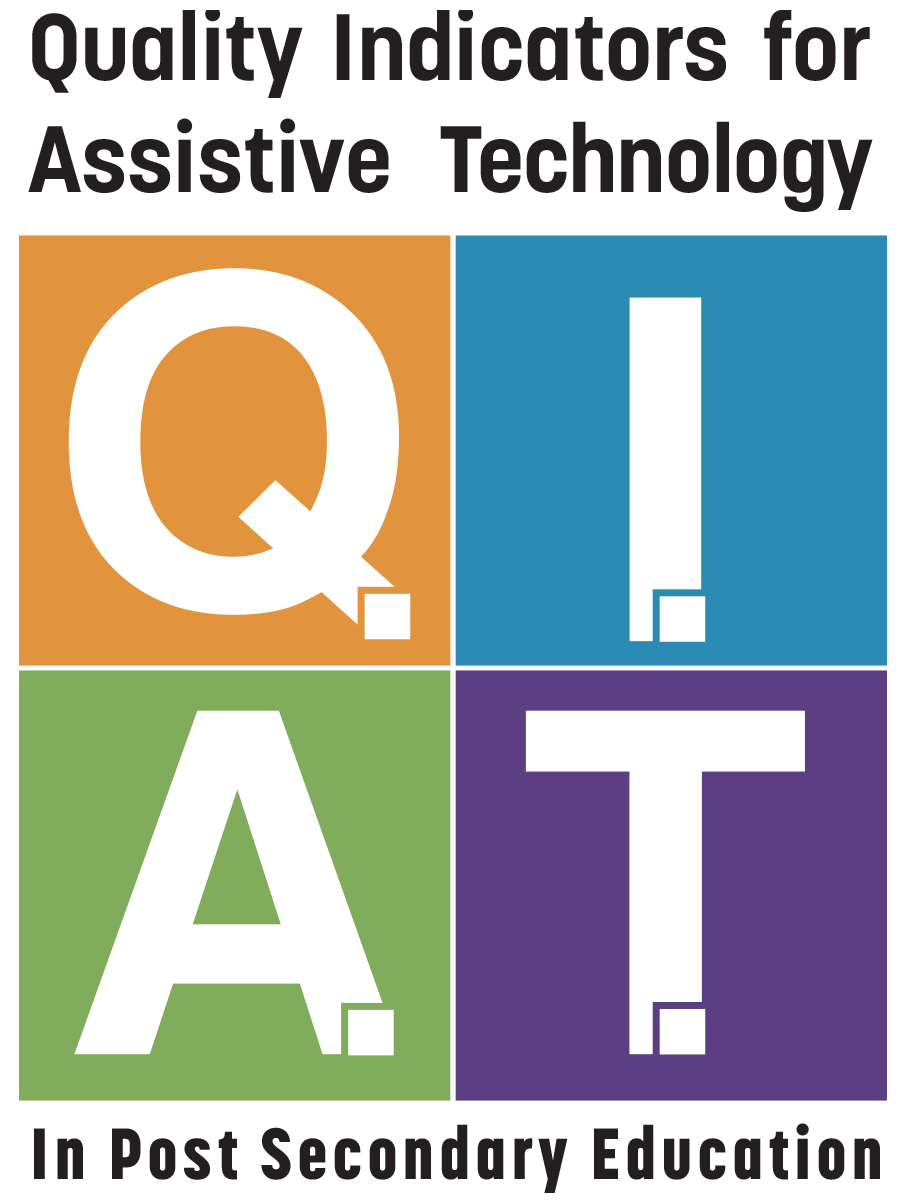Student Indicator Resources
Indicator 1: AT Self-Awareness
Self-awareness requires that you are able to name and describe your disability. In addition, you are knowledgeable about your strengths and difficulties in accomplishing tasks. You are self aware on how Assistive Technology (AT) can help you improve your performance.
Indicator 2: Knowledge of Legal Rights Regarding AT
Knowledge about your legal rights and responsibilities includes understanding the Americans with Disabilities Act (ADA) and Section 504 of the Rehabilitation Act which are both laws that govern people with disabilities in post-secondary education. It’s important to be able to identify how these laws protect you and how to get help when they are being violated.
Indicator 3: Disclosure of Disability for AT Accommodations
Federal laws require disclosure of one’s disability in order to acquire necessary AT devices and supports. You should know how, when, and to whom you should give information about your disability to request an AT accommodation.
Self-Advocacy skills allow you to take a leadership role in your IEP planning and eventually with needed departments on campus. Applying your self-advocacy skills to your AT means you know what AT you need, what you are entitled to, and how you can effectively receive it.
Effective AT Communication skills include the ability to talk, write, or otherwise communicate about your disability. With effective AT communication skills you can describe your AT needs and help other people understand how and why AT is used.
Indicator 6: AT Self Evaluation
AT Self evaluation means knowing how to evaluate my personal performance when using AT and I can make adjustments in AT use in order to improve performance.
Indicator 7: Strategic Use of AT
Strategic use of AT includes knowledge of how to use a variety of AT solutions from low-tech to high tech and the ability to independently choose an effective AT solution in a variety of academic, social, and independent living situations.
Indicator 8: Independent AT Use
Independent use of AT requires knowledge of how to use AT with little or no assistance in order to accomplish tasks and overcome access barriers to achievement. I take responsibility for my use of AT without reminders.
Indicator 9: AT Problem Solving
AT problem-solving requires the ability to identify AT technical problems and malfunctions and to use basic strategies to independently solve simple technical difficulties. You know where and how to acquire assistance when your own AT problem solving skills are insufficient.
Indicator 10: Long-term AT Planning
Long-term planning includes your ability to identify new and useful AT solutions as those solutions become available, arrange for maintenance and upkeep, budget for future AT purchases and when needed, apply for funding for AT devices and services.
